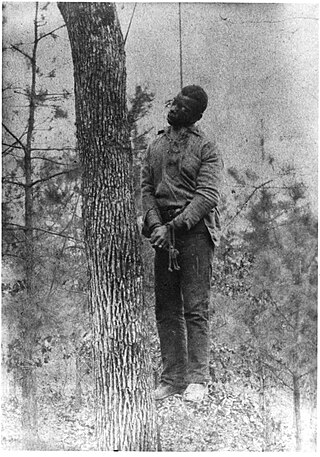Related Research Articles

Troup County is a county located in the west central portion of the U.S. state of Georgia. As of the 2020 census, the population was 69,426. The county seat is LaGrange.

Harris County is a county located in the west-central portion of the U.S. state of Georgia; its western border with the state of Alabama is formed by the Chattahoochee River. As of the 2020 census, the population was 34,668. The county seat is Hamilton. The largest city in the county is Pine Mountain, a resort town that is home to the Franklin D. Roosevelt State Park. Harris County was created on December 14, 1827, and named for Charles Harris, a Georgia judge and attorney.

LaGrange is a city in and the county seat of Troup County, Georgia, United States. The population of the city was estimated to be 30,858 in 2020 by the U.S. Census Bureau. It is the principal city of the LaGrange, Georgia Micropolitan Statistical Area, which is included in the Atlanta-Sandy Springs-Gainesville, Georgia-Alabama (part) combined statistical area. It is about 60 miles (97 km) southwest of Atlanta and located in the foothills of the Georgia Piedmont.

Brownsville is a city in and the county seat of Haywood County, Tennessee, United States. Its population as of the 2020 census was 9,788. The city is named after General Jacob Jennings Brown, an American officer of the War of 1812.

Walter Francis White was an American civil rights activist who led the National Association for the Advancement of Colored People (NAACP) for a quarter of a century, from 1929 until 1955. He directed a broad program of legal challenges to racial segregation and disfranchisement. He was also a journalist, novelist, and essayist.

Lynching was the widespread occurrence of extrajudicial killings which began in the United States' pre–Civil War South in the 1830s and ended during the civil rights movement in the 1950s and 1960s. Although the victims of lynchings were members of various ethnicities, after roughly 4 million enslaved African Americans were emancipated, they became the primary targets of white Southerners. Lynchings in the U.S. reached their height from the 1890s to the 1920s, and they primarily victimised ethnic minorities. Most of the lynchings occurred in the American South, as the majority of African Americans lived there, but racially motivated lynchings also occurred in the Midwest and border states. In 1891, the largest single mass lynching in American history was perpetrated in New Orleans against Italian immigrants.
The Groveland Four were four African American men, Ernest Thomas, Charles Greenlee, Samuel Shepherd, and Walter Irvin. In July 1949, the four were accused of raping a white woman and severely beating her husband in Lake County, Florida. The oldest, Thomas, tried to elude capture and was killed that month. The others were put on trial. Shepard and Irvin received death sentences, and Greenlee was sentenced to life in prison. The events of the case led to serious questions about the arrests, allegedly coerced confessions and mistreatment, and the unusual sentencing following their convictions. Their incarceration was exacerbated by their systemic and unlawful treatment—including the death of Shepherd, and the near-fatal shooting of Irvin. Greenlee was paroled in 1962 and Irvin in 1968. All four were posthumously exonerated by the state of Florida in 2021.

Jesse Washington was a seventeen-year-old African American farmhand who was lynched in the county seat of Waco, Texas, on May 15, 1916, in what became a well-known example of lynching. Washington was convicted of raping and murdering Lucy Fryer, the wife of his white employer in rural Robinson, Texas. He was chained by his neck and dragged out of the county court by observers. He was then paraded through the street, all while being stabbed and beaten, before being held down and castrated. He was then lynched in front of Waco's city hall.
WTRP is a radio station broadcasting a classic country format and is licensed to LaGrange, Georgia, United States. AM 620 WTRP is dedicated to the people of Troup County with local and statewide news, weather, and sports. WTRP is the flagship station for LaGrange College Panthers football, baseball, and basketball teams, Bill Bailey serving as the voice of the Panthers. WTRP is also home to the most Troup County High School Sports coverage on the radio with high school football coverage of the Lafayette Christian School Cougars. WTRP is home to baseball and basketball coverage of Troup, LaGrange, Callaway, LaGrange Academy and Lafayette Christian School. The station is currently owned by Tiger Communications, Inc. and features programming from Westwood One.
On May 16, 1918, a plantation owner was murdered, prompting a manhunt which resulted in a series of lynchings in May 1918 in southern Georgia, United States. White people killed at least 13 black people during the next two weeks. Among those killed were Hazel "Hayes" Turner and his wife, Mary Turner. Hayes was killed on May 18, and the next day, his pregnant wife Mary was strung up by her feet, doused with gasoline and oil then set on fire. Mary's unborn child was cut from her abdomen and stomped to death. Her body was then repeatedly shot. No one was ever convicted of her lynching.
Callaway Stadium is a football/soccer stadium located in LaGrange, Georgia. It was built in 1958 by Callaway Foundation and is used by the Troup County High School, LaGrange High School, and Callaway High School football and soccer teams, as well as the LaGrange College Fighting Red Panthers football team. The facilities are also used by the football teams of the three public middle schools in Troup County as well. Despite its age, the stadium had FieldTurf installed in 2004 and a more advanced scoreboard installed in 2008. Its capacity is roughly 5,000 people all day long and has a press box on the home side.

Callaway High School is a public high school located in Hogansville, Georgia, United States. It enrolls students in grades 9–12 from LaGrange, Hogansville, and the surrounding area. The principal is Jason Graham. The mascot of Callaway is the Cavalier.

Hills and Dales Estate is the home built for textile magnate Fuller Earle Callaway and his wife Ida Cason Callaway completed in 1916 in Lagrange, Georgia. The property includes the pre-Civil War Ferrell Gardens started by Nancy Ferrell in 1832 and expanded by her daughter Sarah Coleman Ferrell beginning in 1841.

Recy Taylor was an African-American woman from Abbeville in Henry County, Alabama. She was born and raised in a sharecropping family in the Jim Crow era Southern United States. In the 1940s, Taylor's refusal to remain silent about her rape by white men led to organizing in the African-American community for justice and civil rights.
The Park Mound Site (9TP41) is a destroyed archaeological site located near Yellow Jacket Creek in Troup County, Georgia, USA. It was investigated by Harold Huscher and a team of University of Georgia students in the early 1970s.
The Civil Rights Restorative Justice Project is an initiative by the Northeastern University School of Law in Boston, Massachusetts, to document every racially motivated killing in the American South between 1930 and 1970. The project aims to serve as a resource for scholars, policymakers, and organizers involved in various initiatives seeking justice for crimes of the civil rights era. CRRJ focuses on research, particularly concerning cold cases, and supports policy initiatives on anti-civil rights violence, such as various remediation efforts including criminal and civil prosecutions, truth and reconciliation proceedings, and legislative remedies.
The Association of Southern Women for the Prevention of Lynching (ASWPL) was a women's organization founded by Jessie Daniel Ames in Atlanta, Georgia in November 1930, to lobby and campaign against the lynching of African Americans. The group was made up of middle and upper-class white women. While active, the group had "a presence in every county in the South" of the United States. It was loosely organized and only accepted white women as members because they "believed that only white women could influence other white women." Many of the women involved were also members of missionary societies. Along with the Commission on Interracial Cooperation (CIC), the ASWPL had an important effect on popular opinion among whites relating to lynching.

The Troup County Courthouse, Annex, and Jail are three buildings built in 1939 with funding from the Public Works Administration, as a project under the New Deal of U.S. President Franklin D. Roosevelt's administration to invest in infrastructure. They were designed by architect William J.J. Chase in Stripped Classical style.

Elbert Williams was an African-American civil rights leader from Brownsville, Tennessee who was killed by unknown persons. He was one of the five charter members of the NAACP branch in Brownsville. Killed in 1940, Williams is the first known NAACP member to be lynched for his civil rights activities.

James Harvey and Joe Jordan were two African-American men who were lynched on July 1, 1922, in Liberty County, Georgia, United States. They were seized by a mob of about 50 people and hanged while being transported by police from Wayne County to a jail in Savannah. Investigations by the NAACP showed that the police involved were complicit in their abduction by the mob. Twenty-two men were later indicted for the lynching, with four convicted.
References
- 1 2 3 "Austin Callaway". Civil Rights and Restorative Justice Project. Northeastern University. Archived from the original on 2018-02-26.
- 1 2 3 "Nearly 8 Decades Later, an Apology for a Lynching in Georgia", New York Times, 27 January 2017; accessed 27 January 2017
- 1 2 3 4 5 AP, "Georgia police chief apologizing for agency's role in 1940 lynching", CBS News, 26 January 2017 (article was first published in the Atlanta Journal-Constitution ); accessed 31 January 2017
- 1 2 3 4 Erasing Austin Callaway, Report by Troup Together 2017
- ↑ Rice, Mark (2017-01-26). "77 years later, police chief, community apologize for lynching". Columbus Ledger-Enquirer .
- ↑ Grinberg, Emanuella (2017-01-27). "'Justice failed Austin Callaway': Town attempts to atone for 1940 lynching". CNN .
- 1 2 "Austin Callaway: A Lynching in LaGrange". Troup Together. 24 January 2017. Retrieved 28 January 2017.
- ↑ NAACP File: Investigating the Lynching of Austin Callaway
- 1 2 3 "Sixth Lynching". The Crisis . Vol. 47, no. 10. National Association for the Advancement of Colored People. October 1940. pp. 323–324.
- ↑ Jason M. McGraw, "Defining Lynching in Order to End It: The Lynching of Austin Callaway and How It Shaped the Debate on How to End Lynching", Northeastern University School of Law 2015, Civil Rights and Restorative Justice Clinic; accessed 31 January 2017
- 1 2 Christopher Waldrep, "War of Words: The Controversy over the Definition of Lynching, 1899-1940," Journal of Southern History (February 2000), Vol. 66, No. 1, 98
- ↑ "NAACP Blasts Lynchless Year; Cites 'Hidden' Instances", Indianapolis Recorder, 18 May 1940
- ↑ Equal Justice Initiative, "Supplement: Lynchings by County" Archived 2018-06-27 at the Wayback Machine , Lynching in America: Confronting the Legacy of Racial Terror, p. 3 (2015)
- ↑ "Report Summary" Archived 2017-04-29 at the Wayback Machine , Lynching in America: Confronting the Legacy of Racial Terror, Equal Justice Initiative, 2015, p. 5
- 1 2 3 "Erasing Austin Callaway," Report by Troup Together, 2017
- 1 2 Shrader, Jennifer (28 January 2017). "Austin Callaway Deserved Better". LaGrange Daily News. Retrieved 29 January 2017.